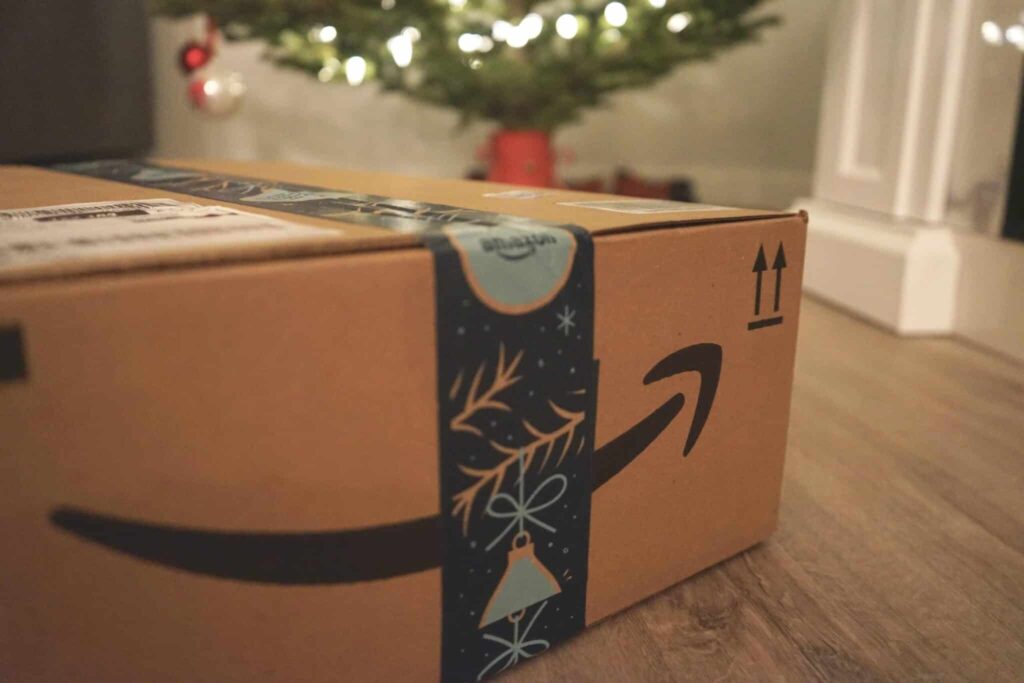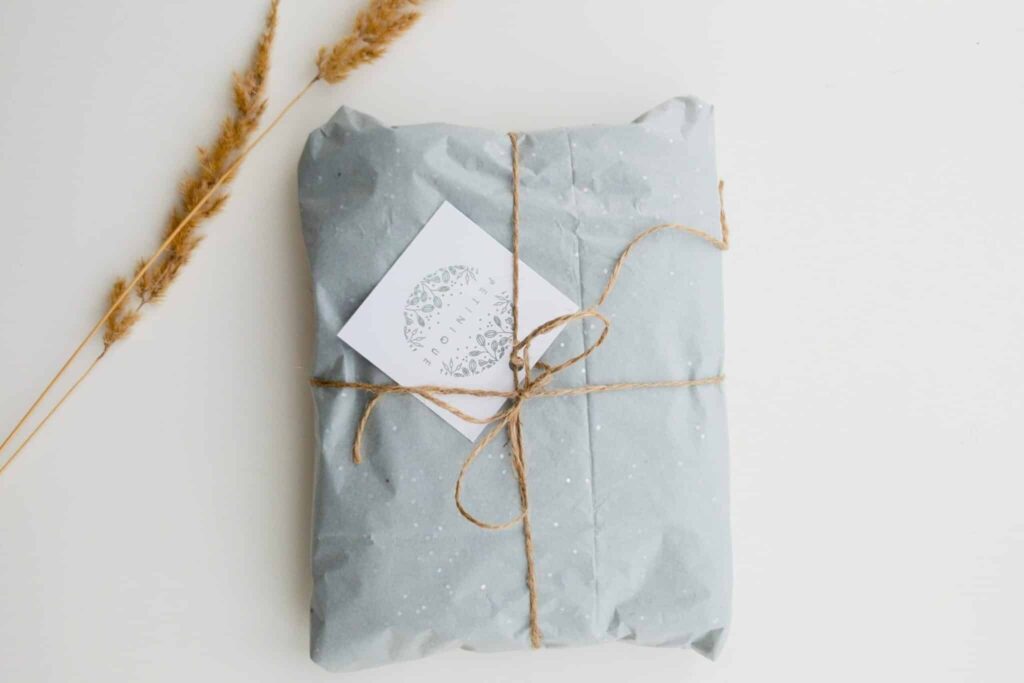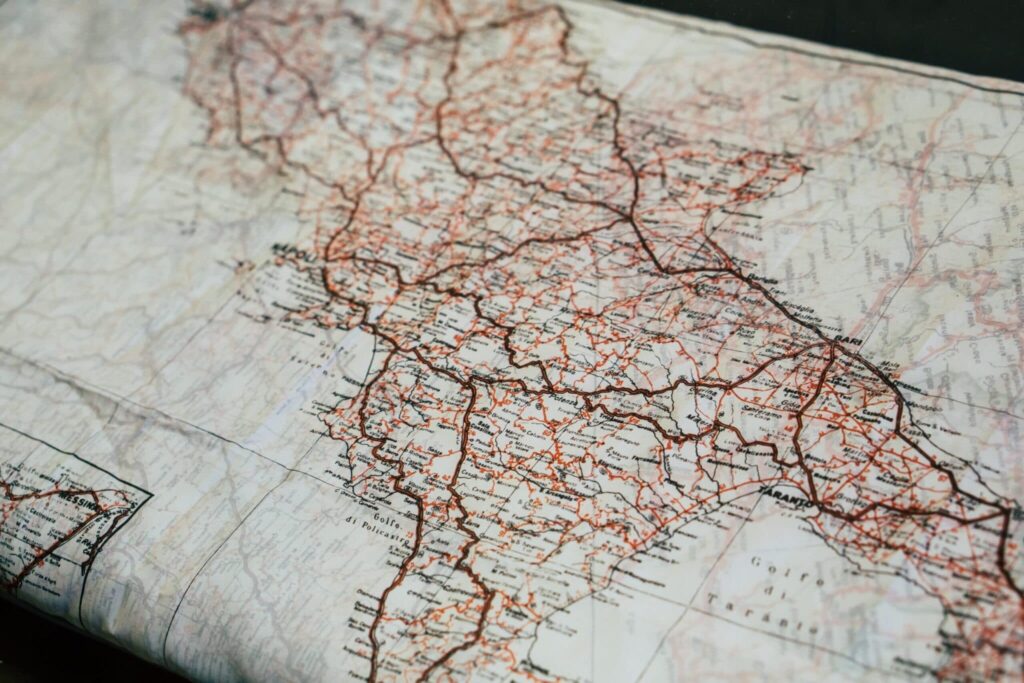
11 Eco-Friendly Gift Wrapping Ideas
We give alternatives for store-bought boxes, wrapping paper, tape, bows and more.

Anastasiia Krivenok / Moment / Getty Images
Around the holidays, it’s estimated that Americans throw out an extra 1 million tons of trash per week – and one of the biggest offenders of seasonal waste is single-use gift wrap.
Use the tips in this eco-friendly gift wrapping guide to cut down your environmental impact this year.
1. Wrap Boxes With Brown Paper Bags

Newspaper is the old standard, but for those of us who don’t receive a physical paper – or who just want to make our gifts a little more personal – recyclable paper bags work great. If you’ve got a stash of, say, Trader Joe’s bags taking over your cabinet, cut them flat and use the non-printed side as a canvas. Decorate with a hand-written message, drawing or stamped design.
2. Reuse Cardboard Shipping Boxes

Using your delivery parcels instead of store-bought gift boxes is one of the easiest eco-friendly gift wrapping swaps you can make. If you’re online shopping for presents, many items will come in a perfectly sized box that’s ready for wrapping. Just don’t forget to recycle or compost all of that cardboard afterward.
3. Upcycle Other Shipping Supplies

Boxes aren’t the only thing you can reuse from your online purchases. Throughout the year, save the tissue paper sheets and brown or white packing paper companies often use to ship their products. Then, when the holidays come around, you’ll have your eco-friendly gift wrap ready to go. The reflective bubble wrap you may receive in your meal kit delivery service makes for great festive wrapping, too.
4. Make Your Own Stamps

Of course, not all packages come in a box. Padded envelopes are another popular way to ship small items. Before recycling, repurpose bubble-lined mailers into stamps. You can cut out holiday shapes like stars and gingerbread men, or paint individual bubbles different colors to create fun polka-dot patterns. You can even make it extra sustainable by using crushed-up berries for ink.
5. Add Natural Festive Touches

Rather than use a shiny plastic bow, go au naturale with tree branches, cotton buds, cinnamon sticks, small pinecones, rosemary, fallen leaves or whatever else you can sustainably source in your area. The easiest way to gather eco-friendly gift garnishes is to clip sprigs off your own Christmas tree, but you can also pick some off the ground at your neighborhood tree lot or get scraps from local farms.
6. Swap Paper for Fabric Gift Wrap
Make your eco-friendly gift wrapping part of your present by opting for a scarf, shawl, pocket square, or handkerchief over traditional paper. As the above video shows, it takes just seconds to package items using the Furoshiki method of fabric wrapping – and you don’t even need to box the item beforehand, which cuts out another piece of holiday waste.
7. Use Biodegradable Paper Tape

A not-so-obvious source of holiday waste is what holds your packaging together: single-use plastic Scotch tape. For eco-friendly gift wrapping, consider using compostable paper tape or washi tape. These biodegradable alternatives are made with wood fibers, pulp or bark and natural adhesives. They come in a multitude of patterns and colors – including plain brown – and you can even find festive rolls coated with sustainable glitter.
8. Ditch the Tape Altogether
You don’t have to be an origami pro to learn the art of tape-free gift wrapping. As you can see in the video above, it’s pretty simple to fold your wrapping paper into itself and secure your gift with no tape required. If you do happen to be an origami pro (or if all the holiday cheer has left you optimistically ambitious), there are ways to incorporate fun folds into your wrapping, too.
9. Turn Old Clothes Into Ribbons and Bows

Button-down shirts, flannels, or even T-shirts you no longer need can be upcycled into reusable fabric ribbons and bows. Cut strips as thin or as thick as you’d like, then tie them around your boxes to add some color and texture to your gifts. You can sew around the edges for a more durable ribbon, or leave them frayed for a rustic feel.
10. Tie Gifts Up With Compostable Twine

Don’t have any clothing you’re willing to part with? You’re not totally out of luck. Many thin ropes and twines are made from organic cotton, hemp and other natural fibers that can be reused as eco-friendly gift wrapping year after year or composted after use.
11. Look Through Old Household Items

You probably have many items lying around that can be used as unconventional yet beautiful eco-friendly gift wrapping materials for smaller gifts. The outdated road maps cluttering your glove compartment, books on the shelf you’ll never read again, and sheet music collecting dust after your child quit the middle-school band can all be given a second life around the holidays.
12. Gift Items in Recycled or Repurposed Bags

Storing the gift bags you receive and regifting them the next holiday season is one option, but if you don’t have any to use this year, you may need to get creative. Making a fabric gift bag from old textiles is pretty simple and adds a personal touch to any present. While your sewing machine is out, you can also make a plush sustainable stocking using old blankets, bathrobes or sweaters.
In a pinch, if you need to purchase a bag, opt for a fabric one with a drawstring (like a wine bag) or a canvas tote bag, as these can be used for many years.
Melissa Smith is an avid writer, scuba diver, backpacker, and all-around outdoor enthusiast. She graduated from the University of Florida with degrees in journalism and sustainable studies. Before joining EcoWatch, Melissa worked as the managing editor of Scuba Diving magazine and the communications manager of The Ocean Agency, a non-profit that’s featured in the Emmy award-winning documentary Chasing Coral.
- 3 Major UK Retailers Are Banning Glitter This Christmas Over ...
- 5 Ways to Have a Green Christmas (and Help the Planet) - EcoWatch
- EcoWatch's Favorite Green Gifts for the Holidays - EcoWatch
- 10 Best Eco-Friendly Stocking Stuffers [Under $20]
- 15 Best Eco-Friendly Gifts of 2020 (for Last-Minute Shoppers)
- A New Biodegradable Glitter Is Here Thanks to Cambridge Researchers

 233k
233k  41k
41k  Subscribe
Subscribe 